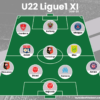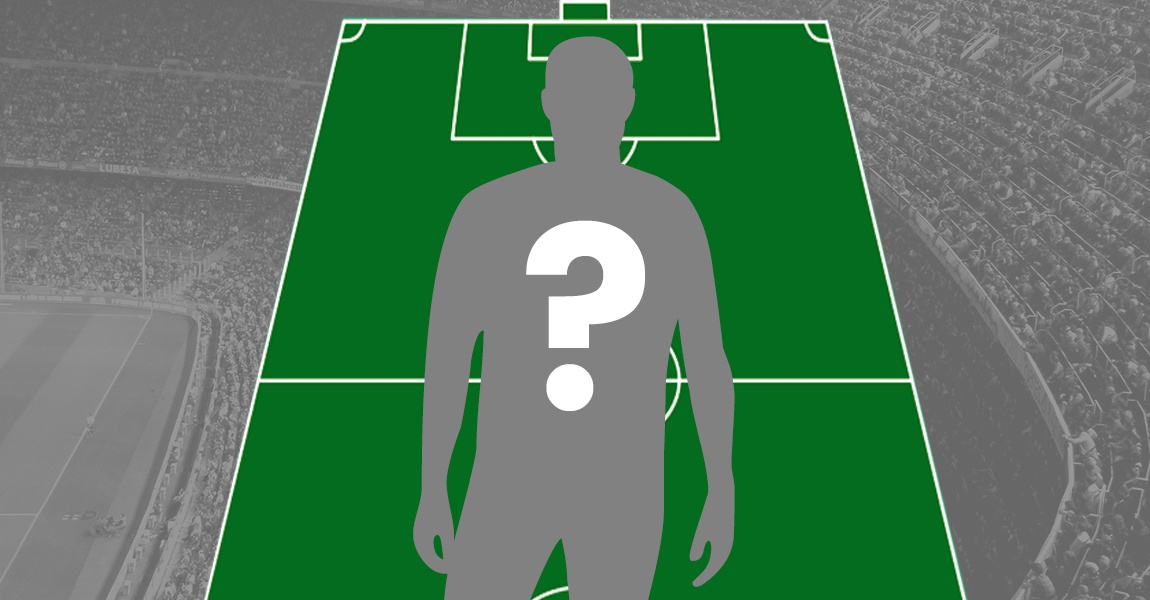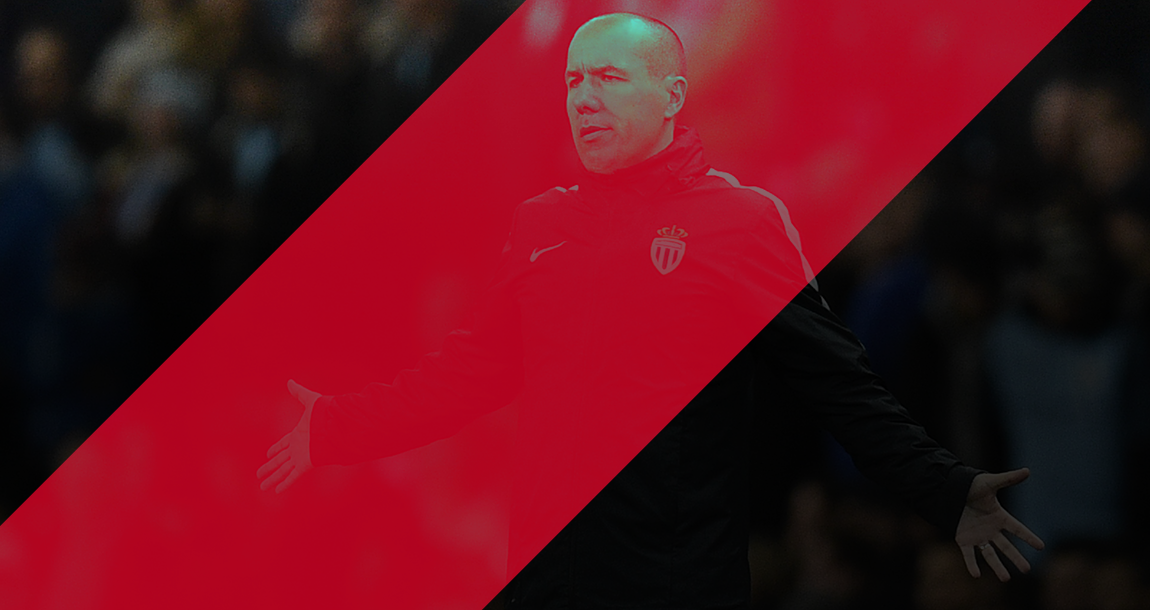Eric Devin writes a detailed tactical analysis about the Copa Del Rey second leg match that ended Marseille 1-4 Monaco.
The last time that Monaco and Marseille met was only six weeks ago, and the Monegasques, fresh off topping a difficult Champions’ League group, thrashed l’OM 4-0. Even with a rotated side, Monaco overmatched Marseille thoroughly, and there was some suggestion that Rudi Garcia had gotten his tactics wrong by seeking to play positively against his south coast rivals. After all, a 5-man defense had been wonderfully effective, if not particularly exciting, against Paris Saint-Germain, earning a 0-0 draw at the Parc des Princes in late October. However, be it through hubris, ambition or simple pride in not wanting to be seen as weak in front of a raucous Velodrome crowd, Garcia maintained his preferred formation, a possession-oriented 4-3-3, even as the absences of Clinton N’Jie, Henri Bedimo and Tomas Hubocan left him without an orthodox left back or left-sided attacker.
Line Ups:
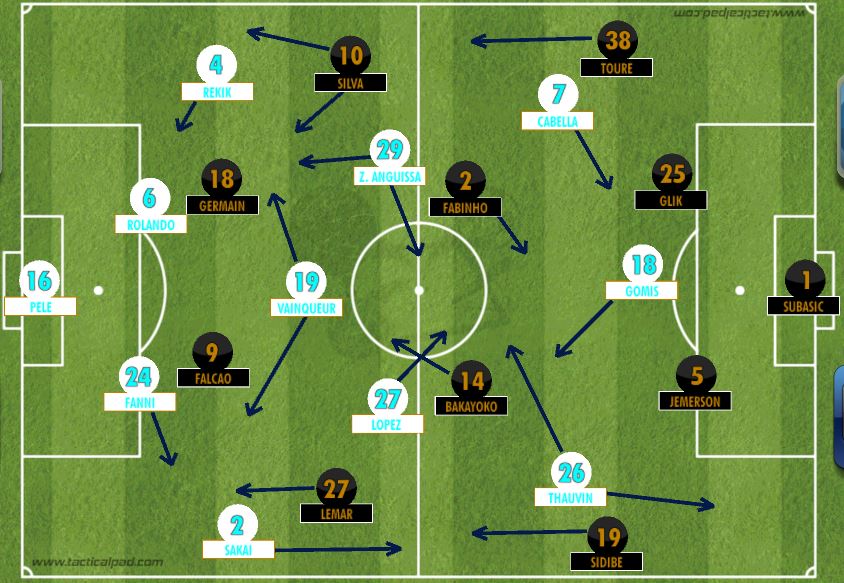
Olympique de Marseille (4-3-3): Yohann Pele; Hiroki Sakai, Rod Fanni, Jorge Rolando, Karim Rekik (Matheus Doria Macedo 59′); Maxime Lopez, William Vainqueur, André-Frank Zambo Anguissa; Florian Thauvin (Saif-Eddine Khaoui 89′), Bafétimbi Gomis, Rémy Cabella (Bouna Sarr 56′)
AS Monaco (4-4-2): Danijel Subasic; Almamy Touré, Kamil Glik, Jemerson, Djibril Sidibé; Bernardo Silva (Kylian Mbappé-Lottin 90′), Fabinho, Tiemoué Bakayoko, Thomas Lemar; Valere Germain (Joao Moutinho 81′), Radamel Falcao (Guido Carrillo 86′)
Despite a good attacking display, particularly in the first half, when a close offside decision against Gomis may have changed the tenor of the match, this imbalance rendered Marseille largely ineffective both in attack and in defense. Karim Rekik failed to provide any impetus going forward and was done for pace with regularity by Almamy Touré, while on the opposite flank, the attacking instincts of Hiroki Sakai often left Rod Fanni, the right-sided centre back stranded on the counter. Monaco, for their part, weren’t even at their best, as Falcao and Valere Germain both snatched at a handful of chances; one wonders what the score could have been had the visitors been as sharp as they have shown in more recent displays.

This first image perfectly encapsulates the primary issues for Marseille as regards balance. Almamy Touré, Monaco’s right back, gets forward with the ball at his feet, trailed by Rémy Cabella, who did a decent enough job tracking back. Having beaten Cabella, however, Touré gets forward, his path indicated by the red arrow. However, rather than having his run contested by the left back, Rekik, the Dutchman (as well as Rolando behind him) stand flat-footed, neither coming to challenge Touré nor tracking the run of Bernardo Silva (orange arrow). To Marseille’s credit, both Valere Germain and Radamel Falcao are well-marshalled by Sakai and Fanni, but with the right back having moved inside to track Germain, Thomas Lemar (white arrow) is in acres of space. Thus, Touré has the option of playing a through ball to Silva, trying to pick out one of Falcao or Germain, or switching play to Lemar on the opposite flank. Given the space he is afforded, any one of those options is plausible, and the youngster will be frustrated for not having created a good opportunity for his teammates.
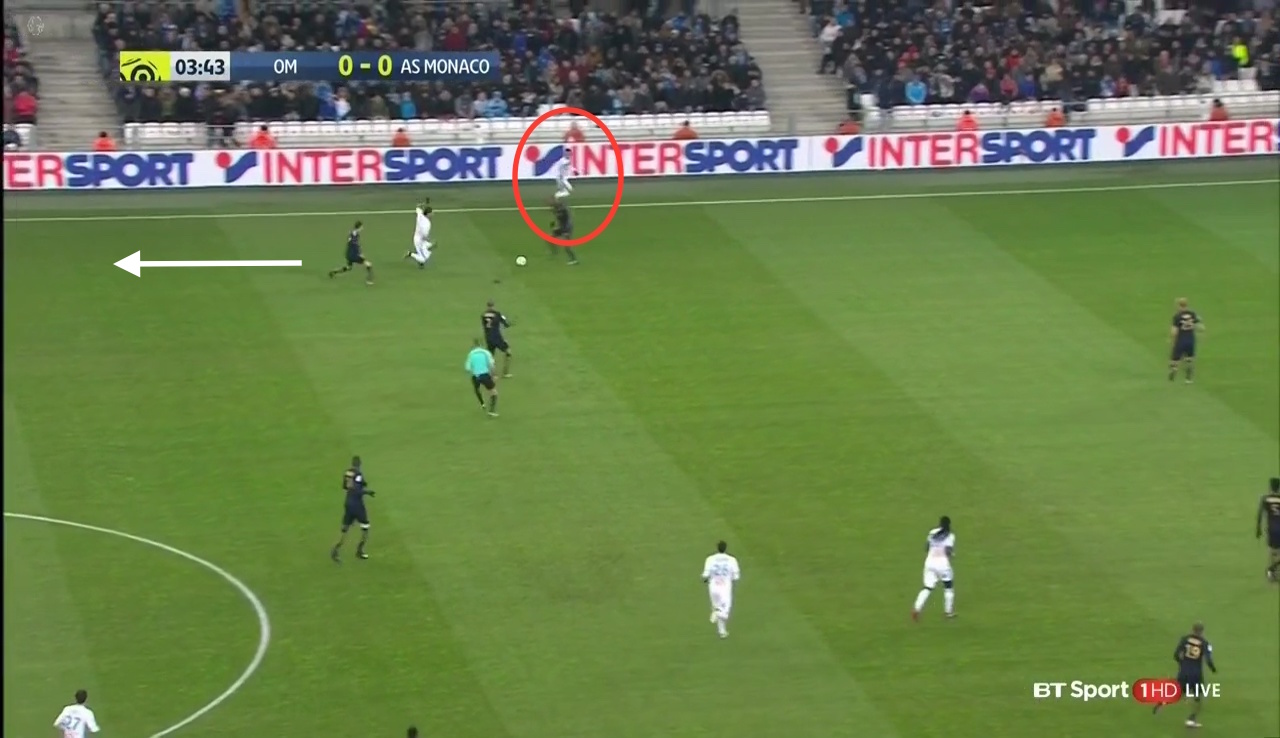
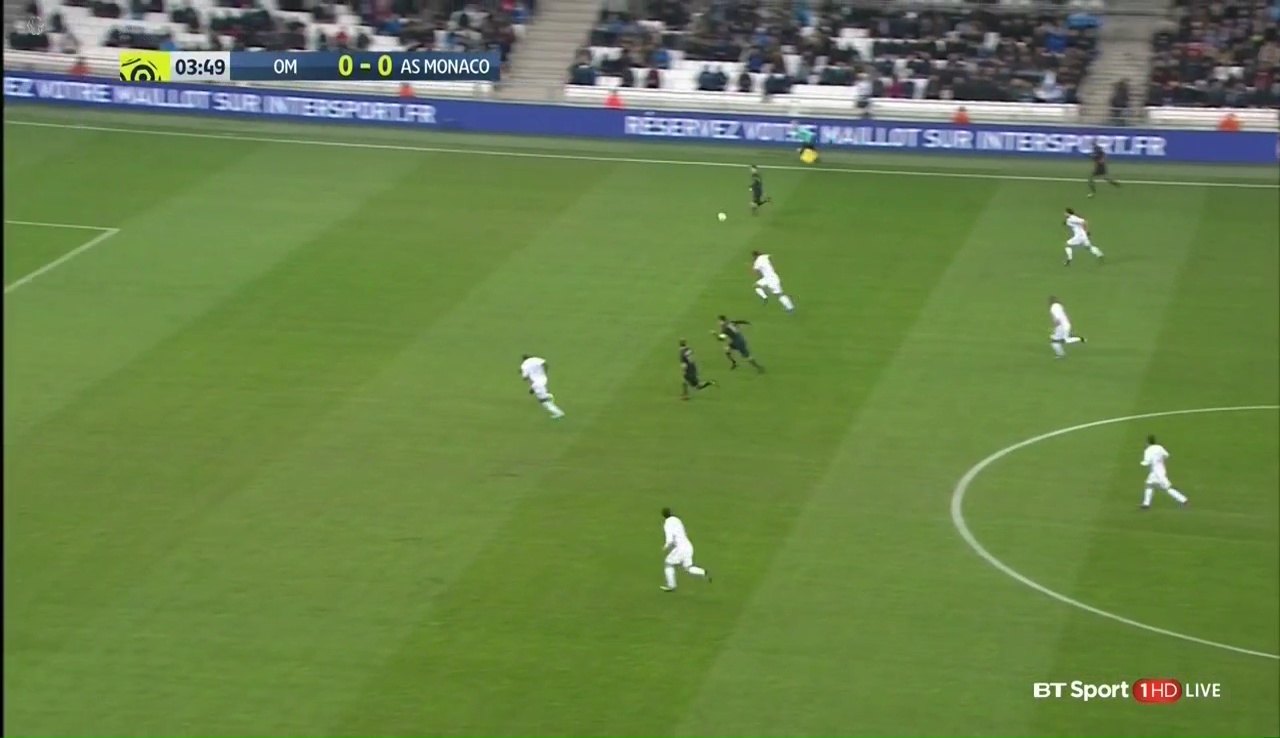
Now, Rekik was put in the side due to Bedimo and Hubocan, Marseille’s first choice left backs, not being available due to injury, and, to his credit, he did try to provide attacking balance by getting forward, particularly when Cabella switched flanks or tucked inside closer to Gomis. However, being naturally a center back, Rekik lacks the vision to successfully perform this role. In the first image, Rekik has tried to play the ball wide to Cabella (red circle) but has, in being dispossessed, shown how fragile Marseille are in possession. With Bernardo Silva pressing from behind, Rekik’s pass, made under pressure, is poor, and Touré gains possession, and Silva, already with a head start on Rekik, has to merely change direction to be in space for Touré’s long ball, as shown in the second image.
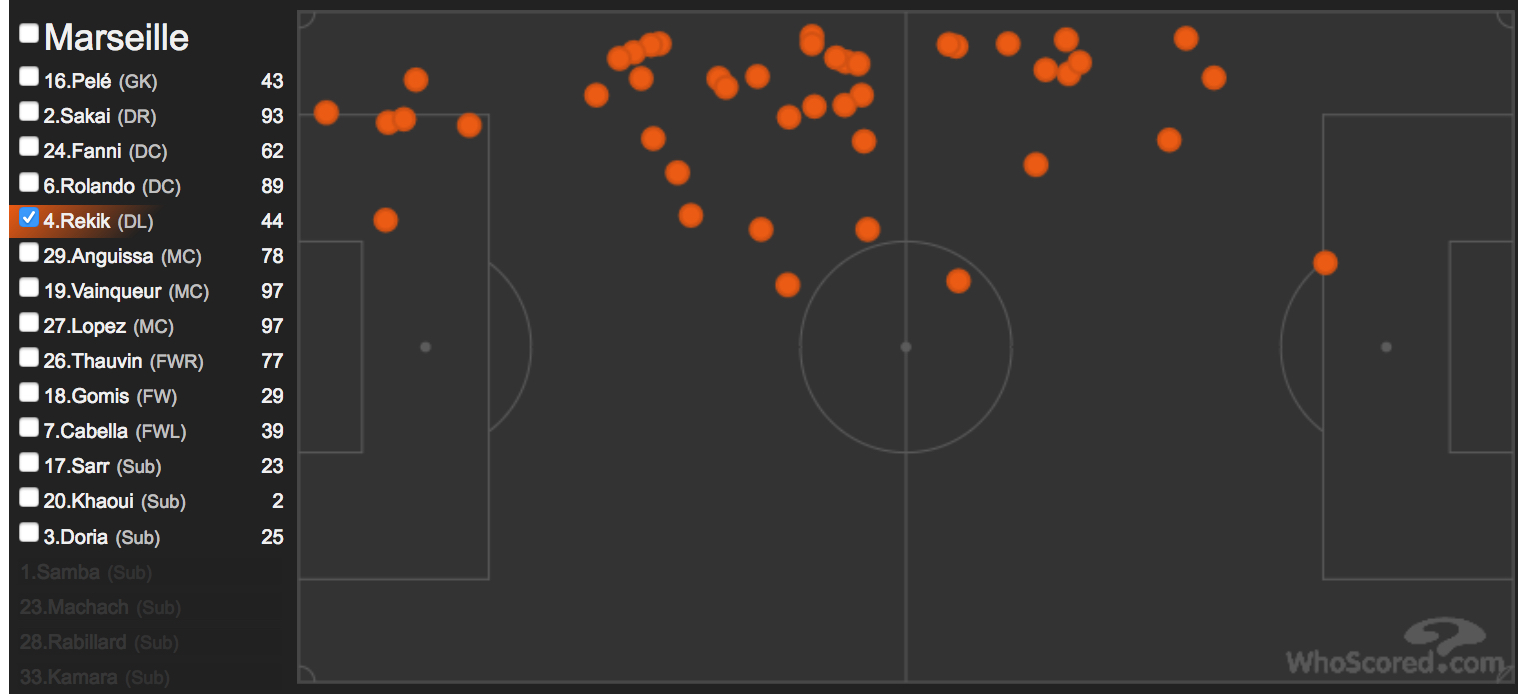

The previous pair of images comes from early in the match, but the two above show the dissonance between Sakai and Rekik’s attacking styles. The former Hannover man hugs the touchline and looks to get forward at every opportunity, forcing Sidibé deep to contend with him, while on the left, Rekik constantly cuts inside, not only allowing Touré past him but forcing Cabella to run the channels as a means of coping. It should be noted here that this not meant to be a criticism of Sakai’s play, even if he could be derelict in his defensive duties at times. Rather, by getting forward, he was also able to create an overload, especially when Sidibé, rather forward-minded himself, was caught in possession.
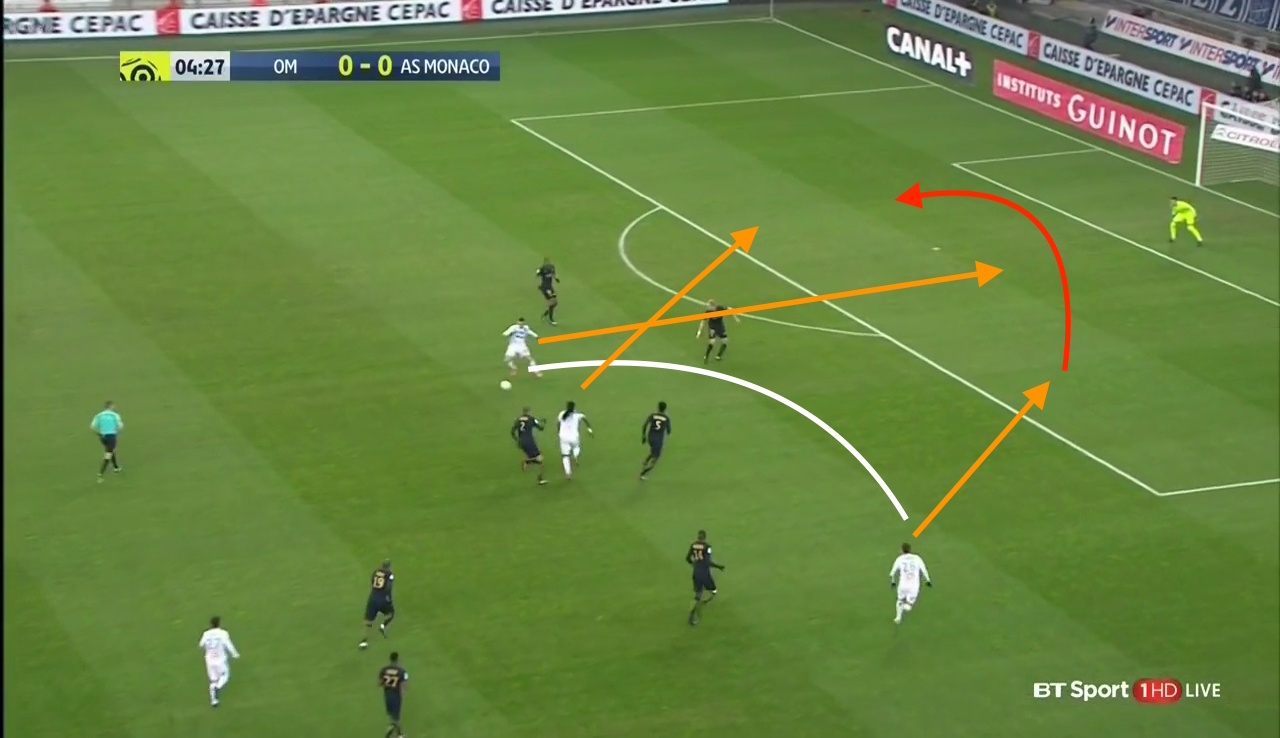
That is plainly shown here, as Cabella has cut inside after receiving the ball. The former Newcastle man is presented with the options to slip the ball through to Thauvin, being vainly chased by Bakayoko, or play a ball over the top. Gomis can continue his run, either as a target for a cross for Thauvin, or as a decoy to draw Glik and Jemerson out of position. Cabella himself can either go wide to the left to cross the ball a second time or stay central to act as another target for a ball in from Thauvin on the flank. In this instance, Cabella ran centrally after making the pass and had a good chance on goal, smartly saved by Subasic.
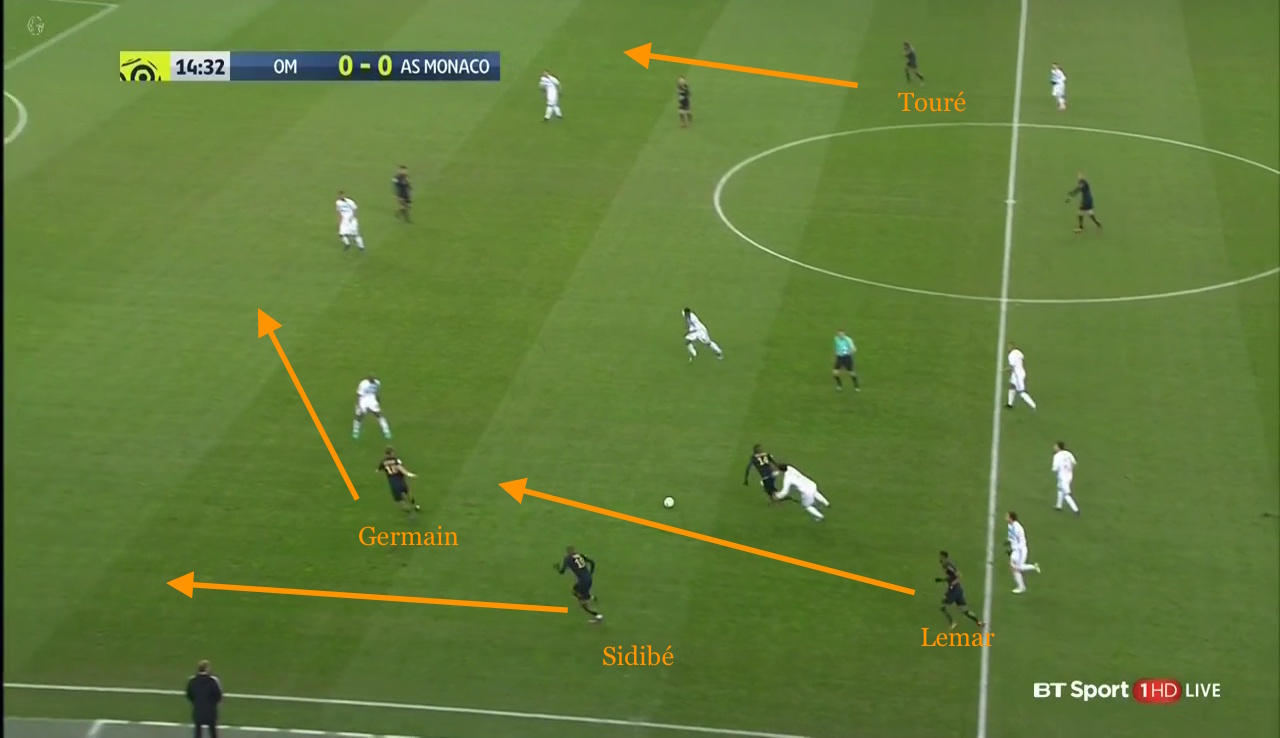
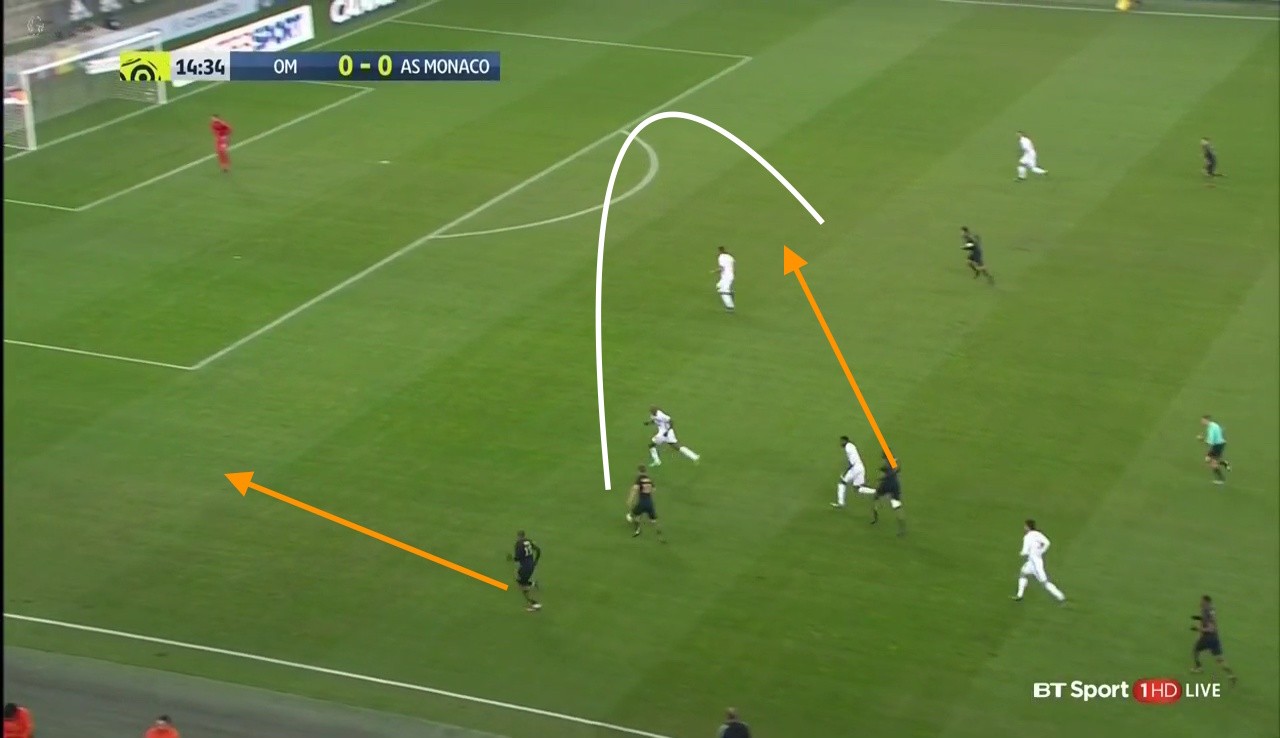
However, even with Sakai’s good intentions, things were just as bad, if not worse when the right back was caught in possession. In the first image, Sakai has had the ball nicked off him by Bakayoko, who turns to run upfield. Immediately, the former Rennes man has four clear options: a switch of play to Touré, a through ball to Germain, a ball over the top to Sidibé, or to leave the ball for Lemar and drop into defense. Bakayoko chooses the third option, and continues his run centrally while Germain can once again play the ball wide for Sidibé or attempt a cross for Falcao or Bakayoko himself. Rod Fanni, facing up to Germain in the second image, is thus in an impossible situation; if he leaves the ball to track the run of Bakayoko, Germain’s run continues unabated, but if he challenges Germain, it is easy for the striker to play in Sidibé for a ball back across the face of goal. There is, of course, something to be said for the notable absence of Marseille’s midfielders here, as only André-Frank Zambo Anguissa is in the frame, but the cockiness of Sakai in the face of a team so keen to play on the counter is the real culprit here.
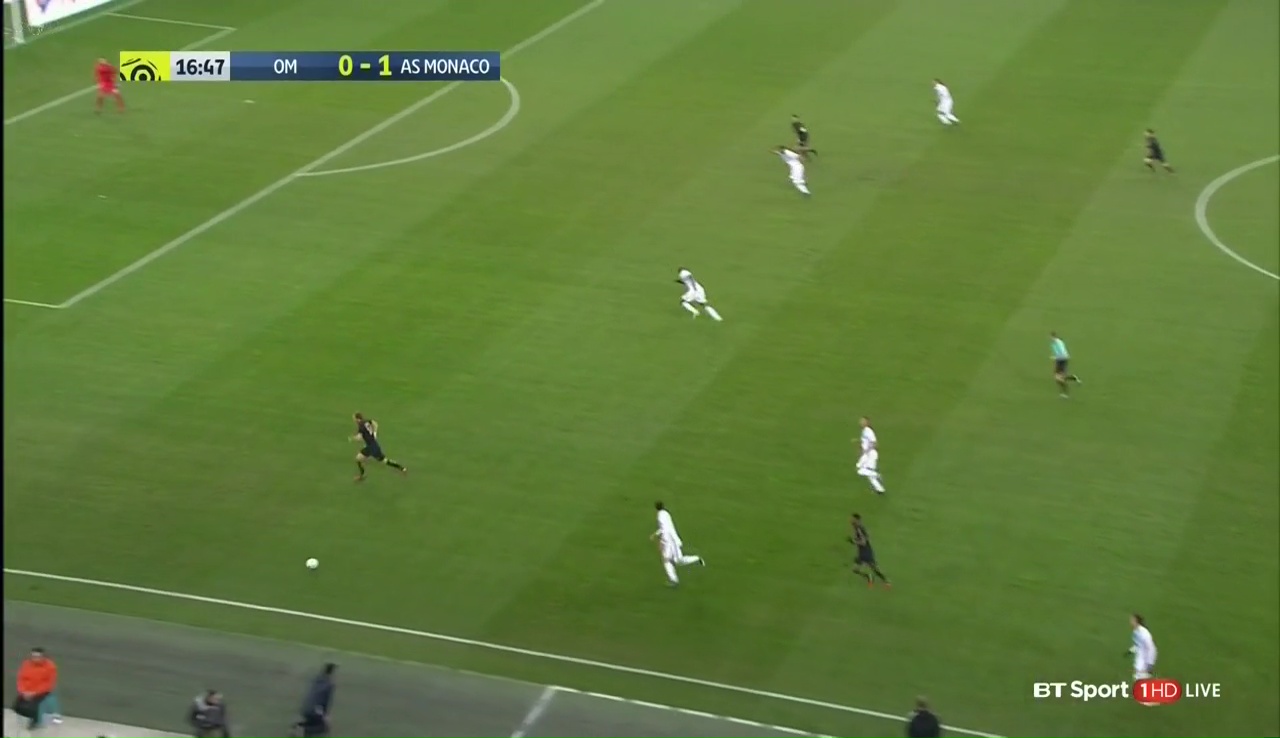
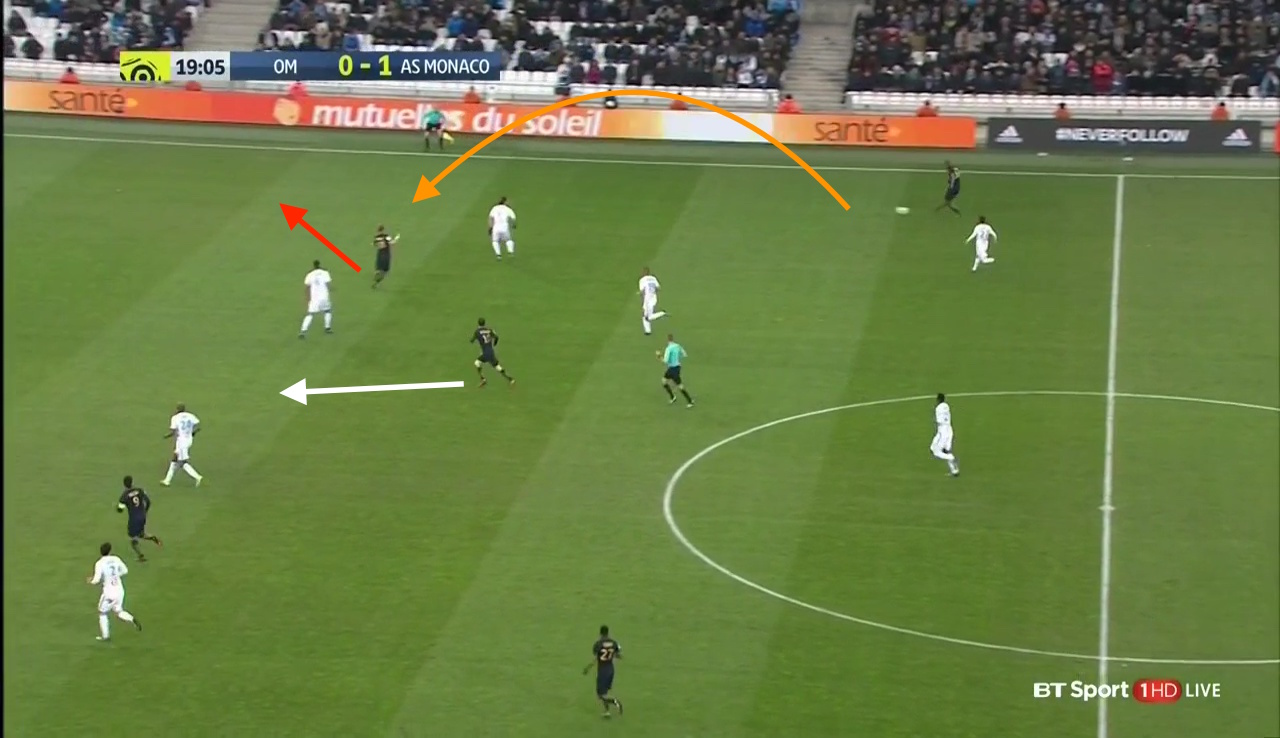
Even so, there was another layer to Monaco’s attack that made things that much more difficult for the hosts, the movement of Valere Germain. The striker has never had the most impressive goal record with Monaco, but has always impressed with his hard work. As he had last season at Nice, his movement continually draws defenders out of position, as he manifests just enough of a goal threat to keep opposing back lines on their toes. In the first image, he runs on to a ball over the top, in acres of space, with Sakai once again caught out. It may seem that Marseille have the situation covered, with Falcao hoping to get on the end of a cross between Rolando and Fanni, but the trick here is in the indecisiveness of Sakai, who looks up at Fanni, unsure whether to pressure Sidibé or track the potential overlapping run of Lemar, who trails him.
In the second image, Germain does the same, slipping between Rekik and Rolando to run on to Touré’s pass (orange and white arrows) as Silva moves inside behind him to create another target for a cross (red arrow). It was lather, rinse, repeat for Monaco for much of the match, as the eagerness of Sidibé and Touré (a combined ten tackles and four interceptions) repeatedly caught Marseille’s fullbacks in possession, leading to easy opportunities to play at the back as Rolando and Fanni were stretched to get wide to cover.
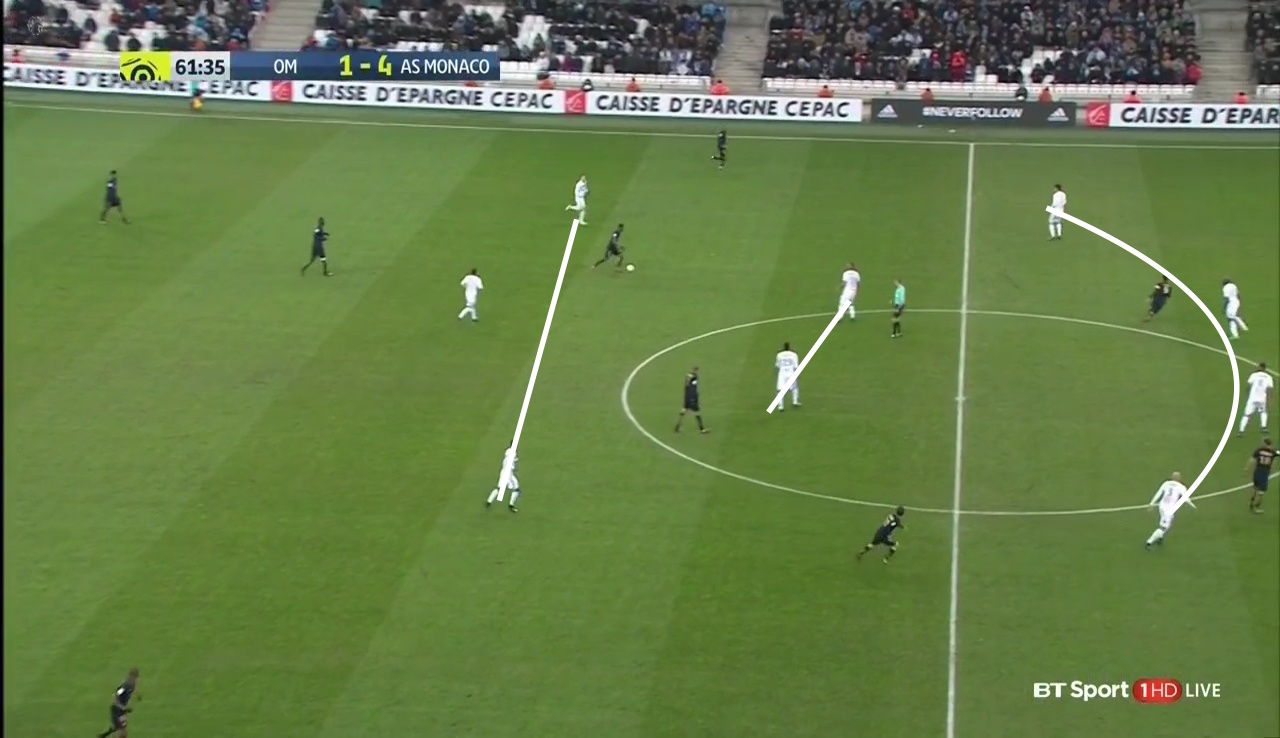
With half an hour to go, Garcia had seen enough and introduced Doria at left back and Bouna Sarr at left wing. The two changes actually made Marseille quite a bit more solid, as the new formation returned some balance to the side; Sakai still got forward with aplomb, but with Sarr having replaced Cabella on the left, there were more possibilities for interchange on the left, as the former Metz man is a willing runner and was able to drop deep to cover Doria’s runs. However, given that Doria is, like Rekik also decidedly more of a center back than a left back, this was also limiting going forward, even if it did give more of a free role to Maxime Lopez, who was now operating as a number ten rather than a deep-lying playmaker.
Even with more consistency from these changes, Marseille were always swimming against the tide. Their injuries and other absences were simply too much to handle when combined with the pridefulness of Garcia; the team obviously have the personnel to play a 3-5-2, with Sarr and Sakai as wingbacks and one of Thauvin or Cabella off of Gomis, but the manager’s decision to stick with his preferred 4-3-3 given what was available was a fatal mistake. Marseille as a project under Garcia has great potential, but the manager may have, on this occasion, confused the long term for the short, spurred on by the team’s recent run of good form.
A summer of strong investment will see Marseille able to go toe-to-toe with Ligue 1’s elites, but without significant investment, the team should be more cognizant of an opponent’s level, even at home in a derby. Monaco’s smart investment in young players as paid real dividends, and Marseille will have every opportunity to follow suit, but for the moment, with a team of loanees and free agents, a more prosaic approach is imperative. Garcia has shown he can recognize an opponent’s level, as he had against Paris Saint-Germain, but in order for the club to continue their recent success in the cup and in the league, pragmatism must be the byword, not matter the temptation to act otherwise.
Read all our tactical analyses here.





















































